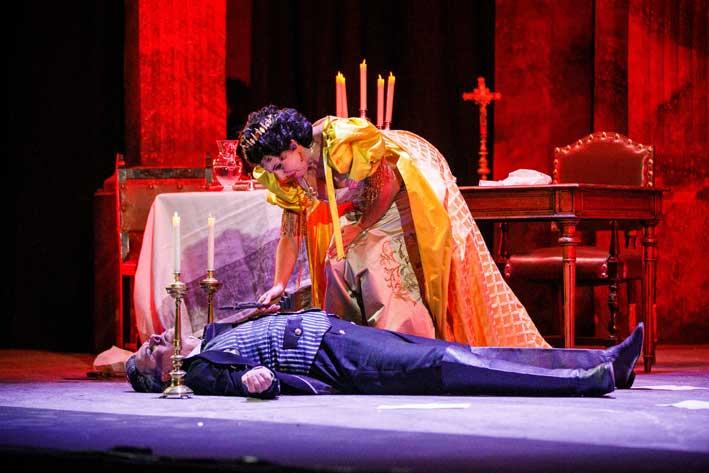Puccini's 'Tosca' is not the grandest and most spectacular of operas. It is a story of lust, love, a thirst for power in every sense of the word. It is an opera where, most typically of Puccini's writing, the story is narrated through the music. Illica's and Giacosa's libretto and Puccini's score work hand in hand to unfold one of the most passionate and sensuous of stories.
But opera is also spectacle and the local audience's love of spectacle was satisfied in the Teatru Aurora's recent production of the opera by the beautiful costumes designed by Luke Azzopardi, the luxurious material provided by Camilleri Paris Mode and the splendid sets recreating three localities of baroque Rome designed by Andrew Borg Wirth. More pointedly the thirst for spectacle was fully satisfied by the colourful finale of Act I which was a blaze of light and gold - the costumes representing, I am told, tabernacles and monstrances. It certainly merited the encore that the whole scene was given. The whole of Act I builds up to this stirring climax. The constantly shifting background of complex emotions that have been building up thoughout the act with the figure of Scarpia, sinister and dominating, against the apparatus of the church triumphant was absolutely dazzling. For some people in the audience, I felt, this was the most important moment in the opera which could very well have stopped there. The encore also gave us the bonus of being able to enjoy further the singing of Scarpia the man for whom "the violent conquest" meant more than " the meek submission"

Musically the opera rests on the three principal singers: Tosca - soprano, Mario Cavaradossi - tenor, and Scarpia - baritone. The very loud chords of the first three bars that become associated with Scarpia, assert his nature from the very start and his presence looms over all that follows. Baritone Lucio Gallo was a first-rate Scarpia. His beautiful and highly polished voice is married to an imposing figure and a magnetic stage presence. In his Act II duet with Tosca with only two characters present on the stage, he and soprano Amarilli Nizza filled the whole stage. Nizza was perhaps not the ideal Tosca since she lacked the dramatic intensity of Gallo. She has a fine voice, very expressive throughout which came out beautifullly in her aria "Vissi d'arte". Her response to Vivien Hewitt's direction after she murders Scarpia was quite moving. A pity that her last note before she throws herself off the battlements of Castel Sant'Angelo which should have sounded defiantly independent instead sounded lame. The least satisfying of the three singers was tenor Stefano La Colla. He certainly has the voice and all the notes, or almost, were in the right place, but there was little subtlety in his singing and he has no pianissimos and not much lyricism. His opening aria sounded rather tentative. However he made up for this in his final aria "E lucevan le stelle." This is not to say that he was not a good Cavaradossi, but only that one would have wanted a better vocal foil to Gallo's baritone.
Among the minor roles baritone Matteo Peirone's Sacristan lightened the mood of the first act with his comic acting, which fell just short of the caricature, and fine singing while bass Franco Lufi's Angelotti sounded uneven. The two choral interludes were well sung and the Malta Philharmonic Orchstra responded well to Colin Attard's direction which gave great attention to detail and brought out the rich tapstry of the orchestration. Vivien Hewitt's production throughout was firm and elicited the right responses from the actors. Her naturalistic direction had a number of subtle changes from the traditional approach to "Tosca" which were altogether convincing.
The handsome programme with the usual interesting articles about the opera added yet another volume to the fine collection that has been building up over the years. But I think that the surtitles have made the printing of the libretto unnecessary.
Photos: Shaun Sultana